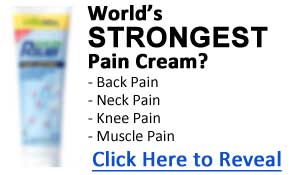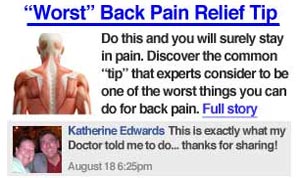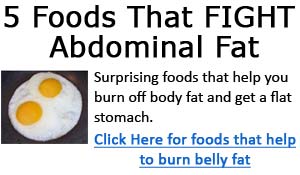Joint
Pain Troubles - Joint Health and Supplements (1)
By Will Brink, author of:
Bodybuilding Revealed
Muscle Gaining Diet, Training Routines by Charles Poliquin
& Bodybuilding Supplement Review
Joint Pain Troubles
One of the most common problems faced by strength
training athletes is joint pain. "Oh my shoulder
is killing me" or "my knee has been bothering
me for months" or "I have been living on
pain killers to get rid of this ache in my elbow"
are common complaints that can be heard in any gym
at any time. Oddly enough however, this topic is not
covered very often in most bodybuilding/fitness magazines.
Maybe the topic is just not all that "sexy"
or "cutting edge," but if you're one of
the thousands of people whose gains in muscle are
being side tracked by joint troubles, then you don't
give a damn about sexy or cutting edge-you just want
relief!
In the past few years I have noticed an increase
in letters and e-mail from people complaining about
their joints. In all honesty, I would estimate 80%
or more of most bodybuilders joint pain is totally
avoidable. If you look at people who have chronic
joint pain, nine out of ten times you can see why
they would have an aching appendage that causes them
pain. More often that not, they (1) rarely warm up
adequately, (2) they train too long and/or too often,
(3) they use overly heavy weights/low reps more often
than they should, (4) they don't take time off to
allow their joints, tendons, muscles, etc., to recuperate
from heavy workouts, (5) they use less than perfect
form during heavy lifts, (6) they don't take in adequate
nutrients, or (7) all of the above!
Now of course we have all had an ache or pain in
a knee, elbow , or other joint at times, but chronic
long term pain is another story. This article is going
to assume that the reader has joint pain NOT because
he (or she) is doing any one of the above seven common
mistakes, but has joint pain due to some other factor
out of their control. If you warm up and stretch thoroughly,
train for no longer than an hour three-four days per
week, cycle your weights and reps, take time off when
you need it, have good form, take in adequate nutrients,
and still have joint problems... than this might be
the article for you.
Types of joint pain problems
There are of course different types of problems that
cause common joint pain in athletes and "normal"
people alike. Bursitis, tendinitis, various types
of arthritis, and other afflictions, can be the cause
of a person's aching joints. Briefly, here is a description
of the most common types and causes of joint pain
that afflict athletes:
Arthritis: There are many different
forms of arthritis. The two most common are osteoarthritis
and rheumatoid arthritis. Of the two, osteoarthritis
is by far the most common to bodybuilders and other
athletes. Caused by wear and tear on the joints, osteoarthritis
is characterized by a deterioration of the cartilage
at the ends of the bones. The once smooth cartilage
becomes rough thus causing more and more friction
and pain. Left untreated and unchecked, this can become
very debilitating for the hard training athlete. Chronic
osteoarthritis has ended the career of numerous athletes.
Bursitis: In our joints there are
small fluid filled sacks called bursae. The bursae's
job is to assist in the muscle/joints movement by
cushioning the joints and bones against friction.
If these sacks become inflamed and/or injured due
to various causes (see above training mistakes), a
chronic pain called "bursitis" can result.
It's most often found in the shoulder or elbow (A.K.A
tennis elbow) but can also be found in other joints
of the body. It hurts like hell and can ruin a workout
quickly if left untreated.
Tendonitis: Tendonitis is probably
the most common cause of pain to bodybuilders and
other athletes and is (luckily) the easiest to treat.
However, if left untreated and the person just "works
through the pain," it can become a real problem
that will put a quick end to your gains in muscle.
Basically, tendinitis just means the tendon(s) around
a joint have become severely inflamed from overuse,
micro injury, etc. Though it might sound simple enough,
for people who suffer from chronic tendinitis it's
no joke and a real pain in the...joint!
>> Click here for Glucosamine Sulfate
>> Click here for Glucosamine Chondroitin
Joint Pain Treatment options
Again, this article is going to assume that the reader
warms up properly before working out, does not severely
overtrain, yada, yada, yada, as mentioned in the beginning
of this article. If the reader (you?) is in the gym
all day, thinks one set on the bench press is a warm
up, and feels anything over 3 reps is high rep training,
than you need go no further to find the answers to
what's bothering your joints!
The treatment options we are going to look at relate
to natural compounds, or mixtures of natural compounds,
that could save a person with aching joints years
of pain and possibly even more. Unfortunately, the
treatments offered by traditional medicine at this
time are generally of little use to highly active
people. Most of the treatments for joint problems
address the symptoms (pain, swelling, etc) rather
than the cause and can often make the problem worse
in the long run. Non-steroidal anti- inflammatories,
cortical steroid injections, joint replacement, and
the always useful "stay off it" advice does
not tend to yield the results most athletes want.
If you look at the names of the aforementioned types
of joint problems, you will notice they all end with
the term "itis," as in tendin-itis, arthr-itis,
and burs-itis. The suffix "-itis" means
"inflammation of " according to The American
Medical Association Encyclopedia of Medicine. Knowing
this, you can see that bursitis means inflammation
of the bursea sack, tendinitis means inflammation
of the tendons, and arthritis means....well you get
the point. Medical terms for afflictions that end
in "-itis" tell us that though the causes
and manifestations are different, the final problems
is one of inflammation.
Inflammation is characterized
by pain, swelling, redness, and less obvious symptoms.
This leads us finally to our list of natural compounds/products
that might just save the joints of the person reading
this article who thought their workouts would never
be the same because their joints are giving them so
much trouble. These products tend to address not only
the symptoms of the problem-that is the inflammation-but
the underlying causes as well.
Jello Anyone?
As strange as it might seem, the main ingredient
(gelatin) in good old Jello might be just what the
doctor ordered for painful joints. Gelatin has been
market world wide for many years as a food and as
a supplement. Gelatin is made from animal collagen.
In all animals-including man- collagen is an essential
structural protein that forms an important part of
bones, tendons, and connective tissues. It is a tough
insoluble protein that is essential for keeping the
many cells and tissues of the body together. Gelatin
contains an exceptionally high content of two amino
acids which play an important part in collagen formation,
namely proline and glycine.
In fact, it takes 43 grams of dried egg whites or
35 grams of dried non fat milk or 89 grams of lean
beef to equal the amount of proline in just 10 grams
of hydrolyzed gelatin. Though the body can form these
two amino acids on its own, it has been suggested
that under certain conditions the rate of synthesis
may be insufficient to provide essential body requirements
and degradation can exceed synthetic processes (i.e.
there is a steady loss of body collagen). The intake
of hydrolyzed gelatin appears to be an alternative
route to getting chondrocytes (cartilage producing
cells) and osteoblasts (bone forming cells) of the
body sufficient amounts of these important amino acids
for making structural proteins. Although chondrocytes
are critical for collagen formation, their number
is limited and their ability to form this much needed
protein is influenced by heredity, age, physical activity
(too little or too much), injury, and availability
of nutrients.
Although bone metabolism is quite complex and not
fully understood, there is a growing number of studies
showing the intake of just ten grams per day of hydrolyzed
gelatin is effective in greatly reducing pain, improving
mobility and overall bone/cartilage health. Several
randomized, double-blinded, crossover trials have
shown improvements in symptoms related to joint pain
(Adem et. al. Therapiewoche, 1991). The people at
Knox (the Jello people) have made a product specifically
for bone health and joints called NutraJoint. It contains
hydrolyzed gelatin, calcium , and vitamin C. Calcium
is of obvious importance to bone health and vitamin
C is an essential and limiting nutrient for connective
tissue formation. NutraJoint is cheap, has no side
effects, and tastes good. I recommend one packet mixed
with OJ with breakfast for people suffering from joint
pain.
>> Click here for Glucosamine Sulfate
>> Click here for Glucosamine Chondroitin
Continue
to pat 2
>> Click here for Will Brink's Bodybuilding Revealed
>> Click here for Will's Fat Loss Revealed



